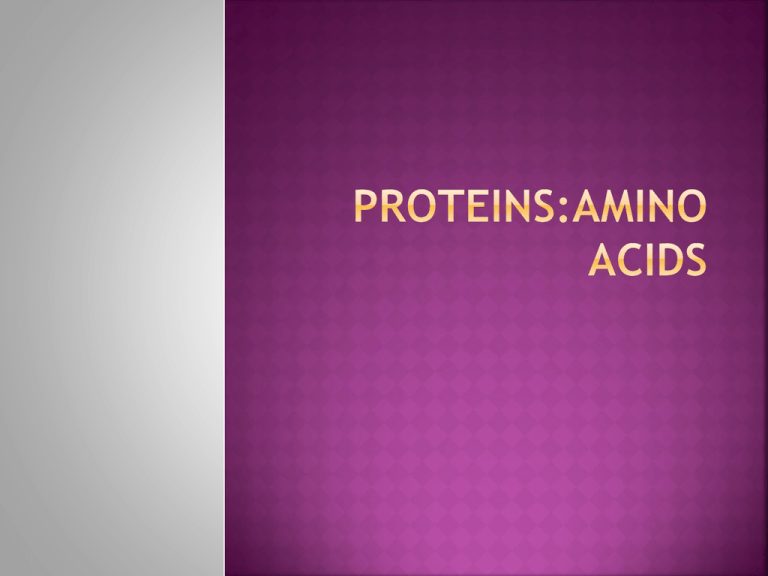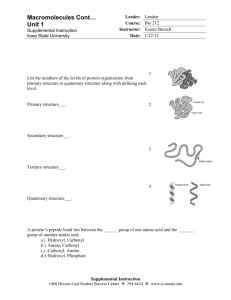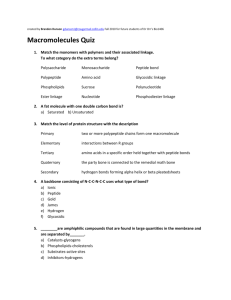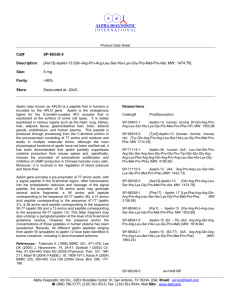Proteins: Primary Structure
advertisement

Molymods (C,H,O & N) each group needs 16 single bonds, 4 double bonds, 4 Carbon, 2 Nitrogen, 4 oxygen, 10 hydrogen Practical activity 21 ALSO! Need to give Mel 2 weeks notice on the chromatography prac in lesson 11 Repro Practical activity 21 worksheet Summary Sheet PPQ (on slide but can repro) Know about the primary structure of proteins Describe the structure of an amino acid Describe the formation and breakage of peptide bonds Explain the term primary structure Describe the test for protein Draw the structure of a protein and label it in as much detail as you can - Describe the structure of an amino acid Acid Group Amino Group R Group - Describe the structure of an amino acid Valine Phenylalanine - Describe the formation and breakage of peptide bonds Hydrolysis Reaction Condensation Reaction Peptide Bond + H20 - Describe the formation and breakage of peptide bonds The covalent bond that forms the peptide bond is strong, it must be broken apart by an enzyme Enzymes that breakdown proteins are called proteases Examples of protease activity other than digestion: Hormone regulation Ageing P101 in book - Explain the term primary structure The function of each protein is determined by its structure A protein’s structure is firstly determined by its amino acid sequence - Explain the term primary structure The specific sequence of amino acids that make up a protein Task GCSE Recap: how is this sequence coded for? DNA strands code for protein structure This makes a strand of mRNA which travels out of the nucleus to a ribosome 3 bases code for a specific amino acid, this is known as a codon or triplet code Use the look up table to create a DNA strand that will code for a 10 amino acid protein, it needs to start with Methionine and end with a stop code Swap with the person next to you Convert their DNA strand into a polypeptide chain - Describe the test for protein 1. 2. 3. Add sample to a test tube. Add biuret reagent Positive result shown by lilac - Describe the structure of an amino acid - Describe the formation and breakage of peptide bonds - Explain the term primary structure - Describe the test for protein Jan 2010 Q4a [3] - Describe the structure of an amino acid - Describe the formation and breakage of peptide bonds - Explain the term primary structure - Describe the test for protein - Describe the test for protein Draw a results table for Practical activity 21 Carry out Biuret and Emulsion test to identify samples 1. 2. You will need in your lab book: Results tables for both tests Photos of both tests Practical Skills: • Drawing Results Table Mark Appropriate column and row headings Ruled rows and columns Separate conclusions and observation columns All tests and results recorded Correct conclusions for all test results Complete? - Describe the structure of an amino acid - Describe the formation and breakage of peptide bonds Draw the structure of a protein and label it in as much detail as you can Amine group R group Acid group Complete the first part of the summary table






